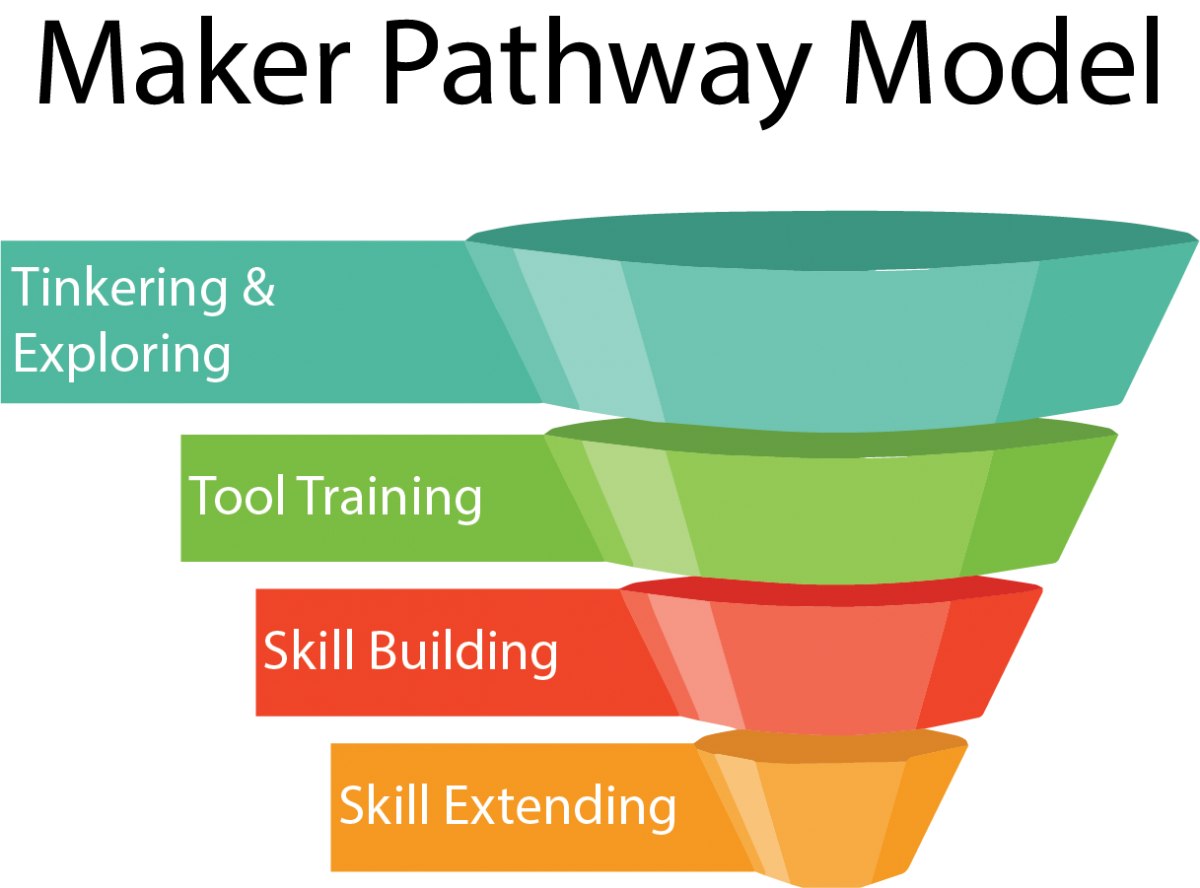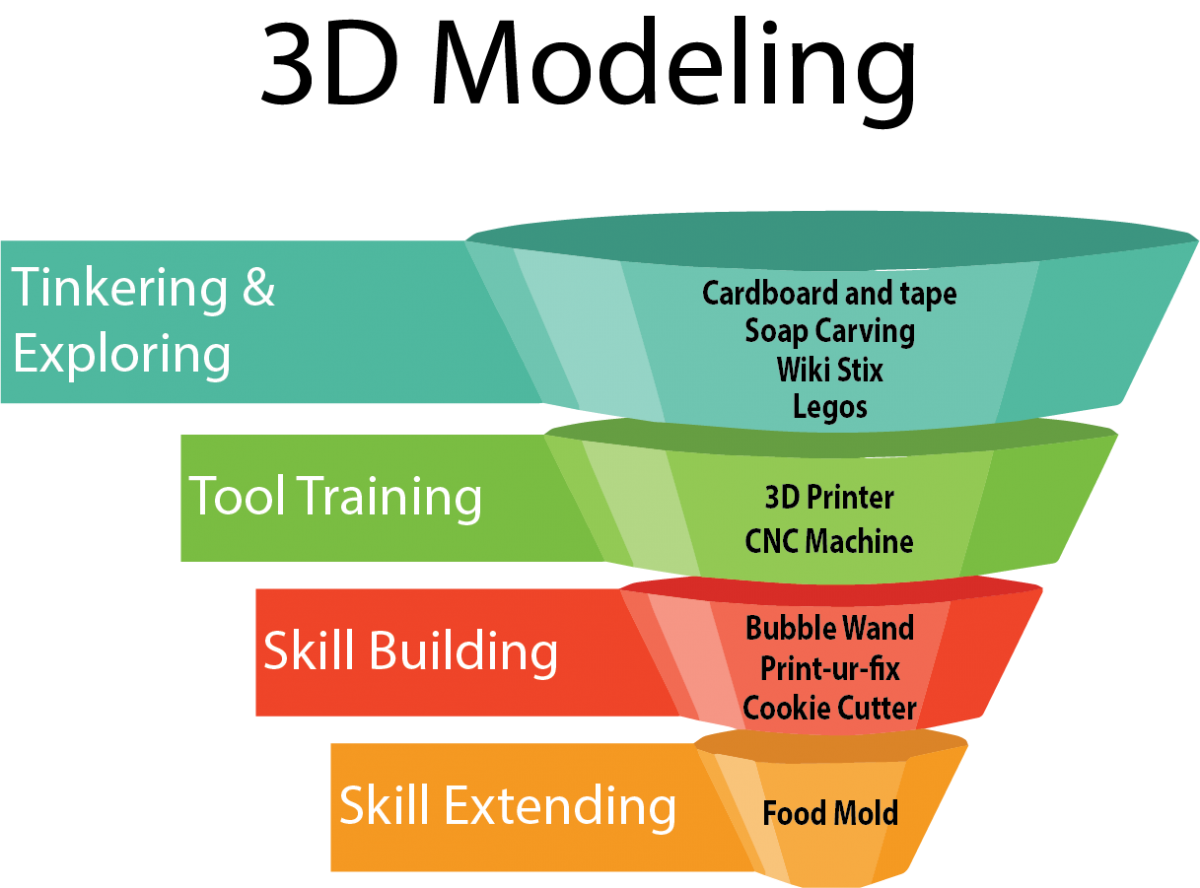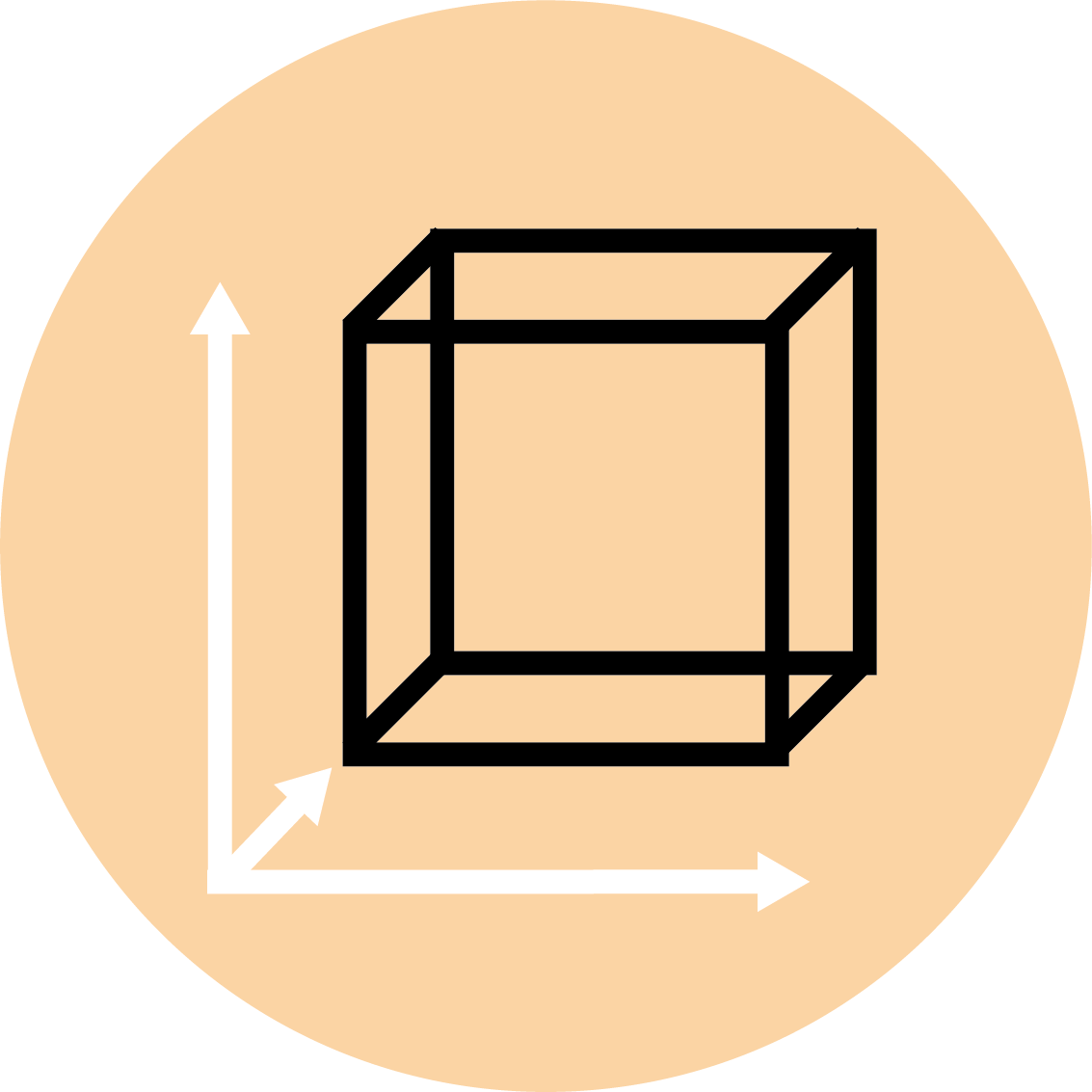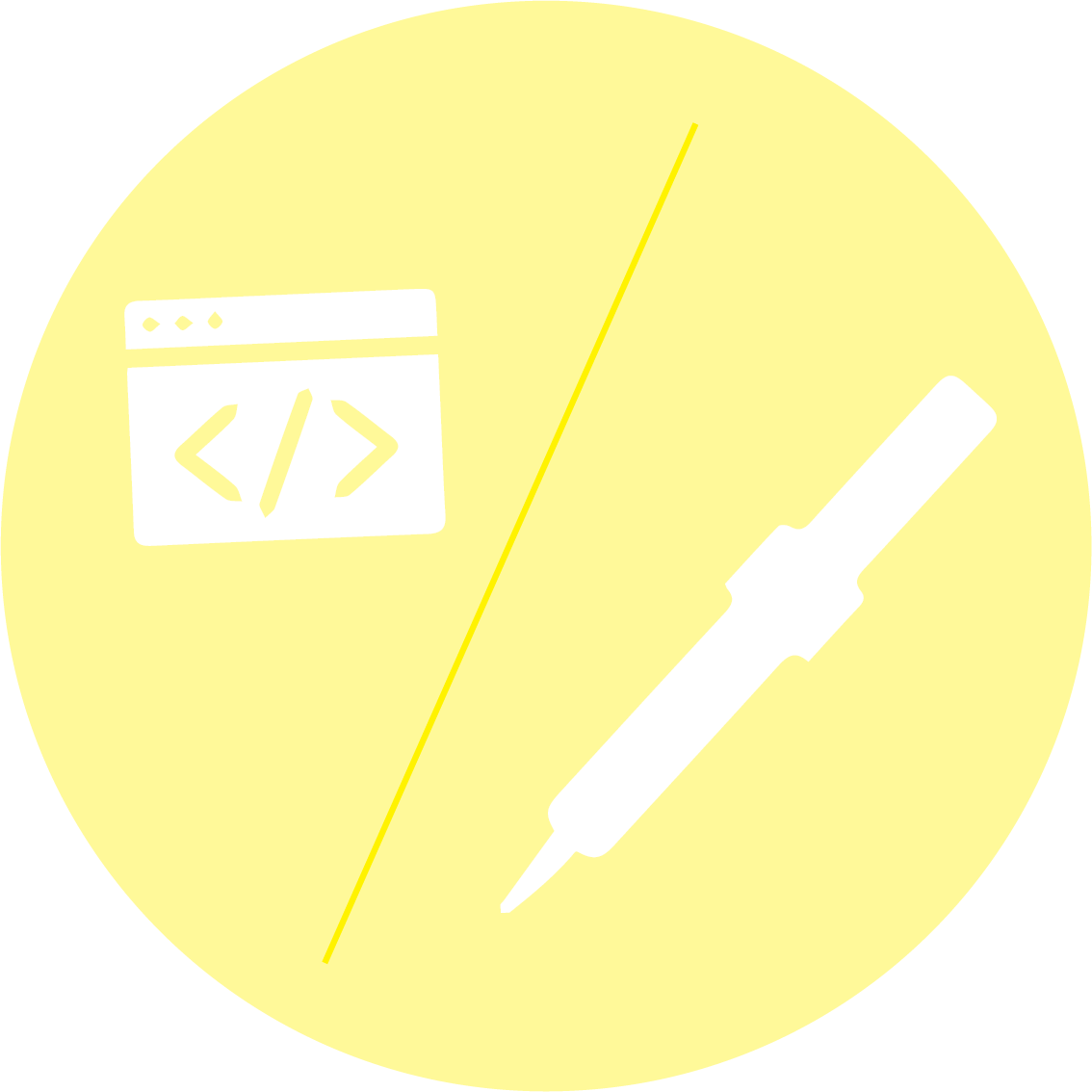Activities in a makerspace provide excellent opportunities to form a maker mindset: learn new things, build skills and resilience through failure, among other things. Activities in a makerspace should lead youth to create self-efficacy and agency for making personally relevant projects.
Below the listed set of activities is how our team conceptualized a "Maker Pathway" of learning.
Maker Pathway
Below is a Maker Pathway Model (Left) proposing an intentional flow of activities to build design and STEM skills as well as support the maker mindset. An example of how the model is used to guide activities is on the right.
Maker Pathway Model

Pathway Example: 3D Modeling

Description of the Maker Pathway
Tinkering and Exploring
Tinkering is often considered synonymous with making. In a broad sense, this is true, however tinkering often does not lead to a tangible product. Tinkering usually involves curiosity and an exploration of a phenomenon to develop a deeper meaning. Tinkering allows youth to develop meaning in a low-risk environment where iterative thinking from failure is paramount. For example, creating a marble-run with plastic tubes allows multiple low-risk 'mistakes' as a tinkerer explores the phenomena of physics.
Tool Training
Tool training is important for youth to learn the safe and standard operational procedures (SOP's) on a piece of equipment. Tool training, specifically, ensures the safety of the youth when operating a tool, but also ensures the safe operation of equipment within the manufactures safety guidelines. Although tool training does not get into the "design" of a particular project, the training should be hands-on and engaging with opportunities for youth to ask questions. The ultimate goal is that youth feel comfortable enough to use the machine and know to whom questions may be directed when working on a project.
Skill Building
Skill building activities are great ways to introduce youth to the capabilities of a tool. Generally, skill building activities are scaffolded for the learner to be successful, as well as provide opportunities for some self-expression and discovery. Allowing and encouraging youth to fail and embrace/celebrate failure during skill building is really important to help build the maker-mindset as well as resilience and persistence.
Skill Extending (Blending)
Skill Extending activities encourage the cross-domain application of skills. At this stage in the pathway, makers are feeling confident in learning and failing. They have self-efficacy in different tools' functions and capabilities. They begin to use multiple tools, design and production methods to create projects. For example, 3D printing an item that will be added to an electronics project; or designing a vinyl cut product that will be incorporated in a CNC'd project.



